Features
Exclusive Interview: Gnomoria’s Creator Robert West (RoboB0b)
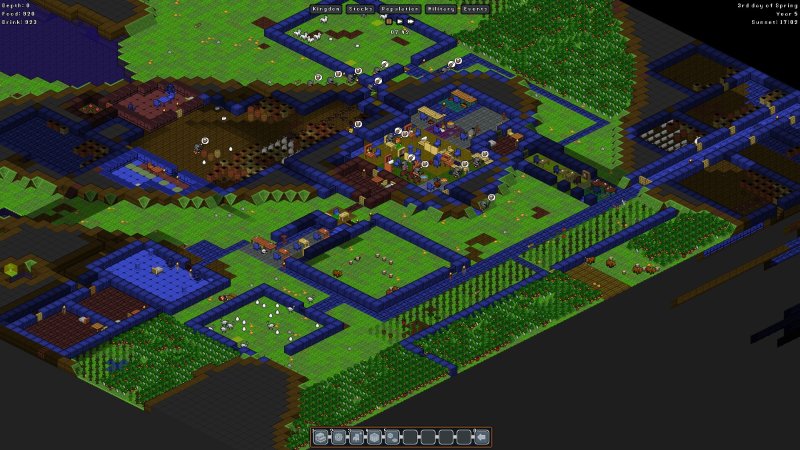
 Considering the massive influx of indie games inundating the industry over the past few years, I think it’s the job of anyone who’d like to be considered a game journalist to help sift through the haystack to find those proverbial needles. A few months ago, while going through one of my several hours long perusing binges on Steam, I came across an intriguing name: Gnomoria. Reading the game’s description and instantly identifying with what it was trying to do, I bought my first Early Access game. For less than ten dollars, I ended up with one of my favorite games of all time.
Considering the massive influx of indie games inundating the industry over the past few years, I think it’s the job of anyone who’d like to be considered a game journalist to help sift through the haystack to find those proverbial needles. A few months ago, while going through one of my several hours long perusing binges on Steam, I came across an intriguing name: Gnomoria. Reading the game’s description and instantly identifying with what it was trying to do, I bought my first Early Access game. For less than ten dollars, I ended up with one of my favorite games of all time.
Gnomoria is a sandbox game where you indirectly control a group of gnomes by setting tasks for them to complete. It’s a simple enough idea, but the depth of this game will catch you off guard. It combines crafting, RPG elements (Leveling Skills), complex management and a fully destructible environment for your gnomes to manipulate. Since I’m such a big fan of this game and I think it deserves more of the spotlight, I thought I’d reach out to Robert West, or as his fans know him RoboB0b, and get his side of the story.
UG: Hi Robert, or do you prefer Bob? Just so you know I’m a huge fan of your game Gnomoria. Before we get to that, perhaps it would be best if we let you introduce yourself to our readers. Can you tell us a little bit about yourself?
Robert: I always introduce myself as Robert but I’ll answer to Rob or Bob or whatever. I’m strictly Uncle Bob to my niece and nephew.
I grew up southern California and moved to the Seattle area to attend DigiPen. I stayed after graduating and was there for about 8 years before moving back to my current location in Long Beach, CA. I’ve been making games for fun since my first programming class in high school about 20 years ago. I’ve been working on games professionally for almost 6 years and been on Gnomoria for about 2.5. I do programming and design for Gnomoria and contract out art and audio as needed.
UG: It sounds like you’ve been a gamer for a long time. What games were you playing back when you first started making them yourself? How about now? Do you have any games you play when you need a break from your project?
Robert: Yeah, I’ve been playing games since I was 4 or 5. We had an Atari and an NES around then and I’ve had consoles every generation since. The time period that probably made the biggest impression on me, and was when I got really into gaming, was probably around when I was 11 or 12, playing games on PC. This was Civilization, Elder Scrolls: Arena, The Incredible Machine, Doom, etc. I think we got internet around ’96 or ’97 and I started playing Doom online. Later, that led into lots of Quake and the Team Fortress mod for Quake. Internet gaming opened a whole new world for me and when I played my first MMO in ’99, Asheron’s Call, I was blown away. As long as I can remember I’ve wanted to make games, but I think around ’99 was when I knew there was no other option for me.
Nowadays, I play a lot of different games. I’m not sure if there are just lots of games coming out now compared to in the past but I have a harder time sticking to one game for a long time. I tend to move onto new games quickly and ultimately get through a lot of games. Some games, like say Gone Home, I knew would be relatively short and for the best experience I should play it in 1 sitting. I go through a decent number of games in a similar manner and so I felt like I should mention it, even though I wouldn’t consider myself to be actively playing them. With that said, the games I’m ‘currently playing’ tend to fit the format of never ending and always being able to pick up and play again later; Payday 2, CS: GO and HEX for example. I guess that’s a good example of the split right now between ‘games’ in the traditional sense, where it’s more of a setting to play against other people like, say, chess or sports in general and ‘games’ that are more of an experience. Some people argue about it and prefer one type over the other but I think they are both great and have their place. The former type of game is one that I’ll likely stick to for a while and practice and get better while the latter is one I’ll effectively consume and move onto the next. I definitely enjoy both.
UG: It sounds like we grew up in the same era of video games. I played the heck out of Civilization back in the day. I guess this leads us into your current project, Gnomoria. What led to the development of this game?
Robert: I would say a couple of things led me into starting work on Gnomoria. It’s fairly common at game studios to work a lot of hours. It was no different for me and it slowly took it’s toll. There was a long time where I barely saw my wife. During this time, my wife and I had a son and, of course, not being around much to see him just added to the problem. I had a strong urge to do the opposite of what I had been doing and work from home if possible. On top of that, I think people in any creative field have a strong urge to feel a part of what they are working on and connected to it. I wanted to be excited about what I was working on everyday and create something that I could call my own. It was really a combination of both things and other factors that was enough to push me to leave my job and start Gnomoria.
UG: Gnomoria is in a genre of games that, although growing in popularity now, was fairly uncommon when you started. What inspired you to make this type of game? Was Gnomoria the game that you had always wanted to play but nobody had made?
Robert: I wanted to work on a game that would allow me to explore areas of programming that interested me and generally enjoy what I was working on everyday. I wanted to explore procedurally generated content and AI. I also really wanted to design complicated gameplay systems and see them in practice and not just on paper. I wanted to create an environment that would allow for emergent gameplay and behaviors. I’ve always been interested in sandbox games and so it wasn’t even something I really thought about. I’ve wanted to explore these general areas for years and some of the specifics sort of fell into place as side effects. For example, the management style gameplay sort of came out of the desire to program AI and wanting to view the world and what you’ve built from a bird’s eye view. It just felt natural. I also really like the way that style scales, by attracting more gnomes, compared to say having a single avatar and getting better tools or new abilities. In the latter, you’re still limited by your ability to walk up to something and click on it, compared to having a bunch of little guys running around autonomously doing your will. Again, this wasn’t even something I sat down and thought about. It was more of asking myself, “If I could work on any game I wanted, what would it be?” and I immediately knew the answer was Gnomoria.
As far as Gnomoria being a game that I’ve always wanted to play but nobody made, I guess the answer would be yes and no. In some ways, I felt like I wanted to play this specific game and it didn’t exist. Other times, there are games that scratched a similar itch and that was enough for me. You have a game like say, Dwarf Fortress, that I would say is very similar and has existed and been fun for a long time before Gnomoria ever started. Other games like, Sim City, Civilization, Dungeon Keeper, Anno and even Crusader Kings are sometimes able to scratch that itch when I’ve had the urge to play a game like Gnomoria.
UG: I’ve tried several other management games and the problem I always run into is the steep learning curve. While Gnomoria is certainly more complicated than your average first person shooter, it seems way more accessible than many games in the same genre, without sacrificing depth. Is that something you made a priority when you first started or is it just a happy accident?
Robert: It was definitely a priority for me when I first started. I think the learning curve is the biggest hurdle to getting into Gnomoria and still has a lot of room for improvement before even mentioning the word ‘tutorial’. Being a management game, it’s primarily controlled through a graphical user interface and it’s not always obvious where to go to accomplish what you want. For example, I’ll sometimes get suggestions to add things that already exist. I treat those as suggestions to improve discoverability of features, available actions and information. There is so much information in the game that displaying it to the player becomes its own large task. To give a rough idea, I know that for the recent SimCity there was at least one full time position (I don’t know exactly how many) for ‘Data Visualization’. This is everything from graphs and pie charts to minimaps to visualizing police coverage or water or what have you, directly onto the world. Whatever it takes to display data in a way that is efficient to get to and able to process holistically and in a more meaningful way than looking at a number.
An example in Gnomoria that I often see, are players confused about why a particular job isn’t being worked on. It could be that no gnomes have the associated skill enabled. They might be busy on another job or sleeping. Maybe one gnome is currently available but you don’t have the required materials or tools to complete the job. All of this information is available to the player, but that doesn’t mean it’s the players fault for not knowing. It’s my job to convey this data, multiple times if necessary, in a central location, an intuitive location and/or in a manner that associates it with the question they are asking. This is something that I’m always working on and hope to improve on before release.
UG: Like I said before, I’m a big fan of the game. I love the introduction of diplomacy. How much are we eventually going to see of our neighbor kingdoms?
Robert: I don’t think we’ll see a whole lot more. I think with this style of game, it can be really easy to lose focus and try to do everything. Sending out raiding parties, seeing neighboring kingdoms and ordering squads around sounds ok on paper but I think it would detract too much from the core of the game. I’d like to focus on managing and nurturing your gnomes into a thriving kingdom and not conquering the world or something. There is still plenty of room to go deeper without losing focus. Attracting Gnomads could tie into diplomacy and come from neighbor kingdoms. You can have diplomatic events that force you to make decisions. A friendly kingdom might request aid in the form of weapons and armor to help defend against goblins. Not helping would hurt your relationship. You might turn once friendly kingdoms against you and start getting attacked or make friends with goblins and hire mercenaries. Gnomes can have a bartering skill which affects trade rates when they are sent out. I think we’ll see more features with Diplomacy but you’ll hear about it second hand, see the after effects of it and not travel to other kingdoms directly and see for yourself.
UG: I’ve seen you interact with the Gnomoria community in several ways but the direct contact on your forums between you and fans of the game seems to go beyond simple bug reporting. How important is the community to the development of the game? Have you ever incorporated a suggestion because it was just to good to pass up?
Robert: Definitely. I feel like it happens regularly but I don’t think I could list every occurrence. The first one, off the top of my head, is Prospecting. I don’t like the idea of mining and sometimes not getting a resource (dirt, stone, etc). If you think of your Kingdom as a closed system, you’re just reshaping the world by moving things around; never actually creating or destroying. Eating or drinking and growing new plants was the only way to actually remove or add resources at first (before the first alpha release). I added merchants to the game as a way of introducing new resources to this system and as a way to get rid of extra unwanted resources. Trees can be planted and grown but I didn’t like the idea of a finite number of dirt, stone and metal so merchants were introduced.
After releasing the alpha, it turns out most people have tons of extra dirt and stone lying around. It gets kind of annoying to stock constantly, isn’t getting used really and not everyone thinks to remove it by giving it away to the merchant. Someone on the forums suggested Prospecting; turning stacks of dirt and stone into metal and potentially other more valuable resources. It was a great way to solve a problem while simultaneously adding something new. It doesn’t feel gamey and fits well in the context of the game but is also a great way to introduce a resource sink.
In general though, I feel that the community has had a big impact on shaping Gnomoria in the year and a half since the first alpha release. It can be easy to get stuck in my ways, so to speak, and be resistant to certain changes. I try to consciously keep an open mind and not be stubborn when talking about the game. I make changes or introduce things that I’m not necessarily totally convinced on but the community generally wants. I can say with 100% certainty that Gnomoria would be different, however big or small, than it is today if I was just making this game locked in my closet.
UG: It’s nice to see a developer take fans’ ideas into consideration. Any big plans for Gnomoria we can look forward to?
Robert: I’m always a little reluctant to talk too much about the future, just to give myself room to back out or change my mind without upsetting anyone. With that said though, I’m looking into changing up enemy behaviors a little. I want to add an element to some enemies that is more than just kill everything in sight. For example, I’m considering changing goblins and mants to prioritize stealing valuables and food, respectively, over killing gnomes. They’ll fight gnomes that get in the way but their top level goal would be thinking about want they want instead of mindlessly killing. This opens up the opportunity to appease them by sending a tribute of trade goods or food and stalling the next attack.
That’s why I did the recent Diplomacy patch actually. I didn’t think I could make those changes and the enemy changes in one go, so I broke it up to introduce part of it without breaking the game. As a side note, I often have to break up something I want to work on into multiple patches. It can sometimes feel strange or broken in the interim but I do my best to keep everything fun and playable on the way up to something new. It does mean cool features that I want to add end up taking a lot longer.
Anyways, I’m planning on changing enemy behaviors, as well as give options for dealing with them that doesn’t involve combat. I also want to reevaluate the risk/reward relationship for each enemy type. Ideally, I could shift some of it towards giving the player the option of attracting more enemies. For example, purposefully inflating Kingdom Worth to attract more gnomes but knowing that it will attract more goblins. I think this idea can be improved on as well as extended to mants, golems and more. Trying to make some sense of why you’re being attacked and giving the player some control in the process, so it feels more like a decision than an unavoidable circumstance.
Part of that choice is giving incentive. I’ll likely make golems drop a “golem core” at some point which can be used to craft automatons to add to your workforce. I want to eventually go over mechanisms again and add a few more to the mix. Eventually, (probably after release) I want to work on a magic system. It would require lots of research (similar to Tinkering), rare components (from killing certain enemies or potentially a rare trade) but would allow you to do new stuff that could change the game in a significant way. Enchanting items with runes, magic users in your squads who can put enemies to sleep, burn them, heal allies, alter material types like turning skin to stone. Researching magic would be a choice as gaining magic power would gain the attention of new enemies. I’m picturing being attacked by a necromancer as he raises your slain gnomes from the dead, a golemancer turning your unstocked goods against you or related events like causing it to rain lava temporarily.
UG: I have to say that the idea of magic seems really ambitious and a ton of fun. Since you mentioned it, what is your goal for an official release?
Robert: It does seem a bit crazy at first. More than a few parts of it already exist in some way and it’s just a matter of feeding it input from a different source. That’s one of the cool parts of working on a sandbox game, I think. When possible, I try to implement something as an isolated gameplay system. There might be some internal parts to it, but when possible it works with whatever is at hand and makes no assumptions. It can be error prone sometimes and produces hard to track down bugs but it also can produce some cool emergent behavior. A magic system in Gnomoria would mostly just be a way to work within the system but change inputs from anything that would occur naturally, sort of breaking gnomish reality in a way — aka Magic.
As far as release, I’ve always said that when Gnomoria reaches a point where it has enough content, is reasonably polished and surpasses that sort of expected quality bar for a ~$10 “finished” game that I would release it. A lot of people have expressed to me that they already feel it’s at that point but I would like to go a bit farther still. Ignoring content and features, I think that before a release the UI could still use some polishing and the game could benefit a lot from a tutorial. After release, assuming there is interest and I can still afford to spend time on Gnomoria, I would like to continue free updates like with the mentioned magic system. I feel like to really get in there and work out a big system like that, I’d want to wait until after release when there wouldn’t be that weekly or every other week patch schedule. I can just focus on the update until it’s done instead of trying to release it in parts.
UG: I think the game is definitely close. I’m sure most of the fans would agree. What about life after Gnomoria? Have you had any great ideas you’ve put to the side while you’re finishing up or do you think you might go back to working for someone else if the price was right?
Robert: I definitely get a lot of game ideas and sometimes I write them down. I have, probably, ten rough outlines for different games at the moment. It’s fun to think about but I don’t take any time to pursue them. I enjoy working on Gnomoria but I am looking forward to one day experimenting and prototyping some of those ideas to see if there is anything there. When working for someone else, there will sometimes be projects you get really into and feel apart of and other times you just get your work done but aren’t as interested and don’t feel fulfilled. Given the choice, I will always choose to work on my own games. It’s so much more rewarding to see your ideas become realized and feel connected and a part of the project. As long as I can afford to support my family with my games, I wouldn’t give that up for any price.
UG: Could you talk a little bit about how important programs like Steam Greenlight and crowd sourcing sites like Kickstarter are to indie developers?
Robert: For me it was really important. I released the alpha of Gnomoria in June of 2012 and while not directly a crowd sourcing site like Kickstarter, alpha funding and crowd sourcing in general made it possible for Gnomoria to exist today. I haven’t used Kickstarter myself but I can see how it can be crucial for a project to continue development or not. Just thinking about even a couple of the games that exist because of Kickstarter or alpha funding is great for both gamers as well as developers. It’s already starting to feel pretty standard and just a normal part of the industry right now. At least for projects that don’t have funding from any other sources, it will continue to be more and more common for the foreseeable future.
As far as Greenlight, I think my experience wasn’t the norm. I knew it was coming up and Valve had stopped taking game submissions through their normal avenue. The day Greenlight launched, I had Gnomoria submitted within a few hours. Gnomoria was greenlit in the second round of games and that was sort of the end of it. Really, it ending up being a stepping stone into Early Access which mattered more to me. In one sense, Greenlight made it possible for Gnomoria to get on Early Access but without Early Access, Greenlight wouldn’t have mattered much on it’s own. I think that’s different for games that are at or near completion and ready to launch into the regular Steam store. For those games, Greenlight is probably the more important step.
Indie games of course existed prior to Greenlight or Kickstarter but I think you could easily argue that they contributed to more people getting their games out there, which I think is awesome for everyone.
UG: I think we can all give thanks for the surge of creativity programs like that have made possible for the industry. We get a lot of questions especially from our younger readers about where they should start in terms of learning programming and game development. Do you have any advice for them?
Robert: Taking a class in high school or college is always a good idea. Some people have no trouble learning things on their own but sometimes having that extra motivation, homework, grades, or whatever, can be enough to get you started. Once you get started, it becomes way easier to continue your education by yourself. At that point, there are tons of resources online and plenty of directions to go to get really deep into something or cover a broad range of topics. I don’t have a ton of experience with functional languages like Haskell or Lisp so I’ll just comment on procedural ones. Personally, I’m a fan of C and C++. Gnomoria is written in C# which shares a lot of syntax and feels comfortable to C++ programmers.
Ultimately, the language doesn’t really matter. You can probably make a good argument around “easier” languages that maybe help you learn faster versus them teaching you bad habits since they are doing things behind the scenes you don’t realize. I would say just pick something you like and go with it. It’s understanding the concepts that are important. Regardless of what language you’re using, you’ll want to understand data structures, algorithm analysis, etc. This is after fundamentals like variables, loops, functions and what not. If you have a good understanding of everything involved, you’ll end up picking the best tool to reach your goals. That could very well be different languages for different tasks. It’s pretty common in games to have an engine in C/C++ and use Lua, C# or some proprietary language for scripting with tools potentially written in other languages.
I wouldn’t get stuck on figuring out what the best language is before even getting started. So I guess my advice would be to just start learning and then continue learning. If you don’t know how to get started, check out a tutorial online, pick up a book or take a class. Pick whatever method you learn best from and then just keep going.
UG: Well I can’t thank you enough for talking with us Robert. I really enjoyed the conversation and look forward to seeing how Gnomoria continues to develop. Is there anything you’d like to say to the fans of your game?
Robert: Thanks for talking with me, it’s been fun. To the Gnomoria fans out there, I want to say thanks for supporting me and Gnomoria. I feel extremely lucky to be able to work on something I love and spend time with my family. It wouldn’t be possible for me without those who bought into the game in alpha or beta, looked past the bugs and roughness and were a part of the development and progression of Gnomoria.
If you’d like to check out Robert’s game for yourself, click here!
http://www.youtube.com/watch?v=Vgq3Nj_4q6E
Featured
Horse Racing Games For iOS

Horse racing is a globally spread sport with billions of fans worldwide. The thrills of the races and the excitement of the betting make horse racing quite popular among adrenaline rush seekers.
However, unlike other sports like football or basketball that you can actually try in your backyard, becoming a racehorse rider is out of reach for most people. But all hope for our fellow race lovers is not lost and the gaming world comes to the rescue.
We are talking about horse racing simulation games where you can pick or breed your own horse, participate in online racing tournaments, earn prestige, take care of your horse, and much more.
Horse racing video games are perfect when it comes to getting the bigger picture of the sport and familiarizing yourself with other aspects apart from racing, like stable management, breeding, and finance management.
On top of that, horse racing video games can help you understand how the sport works, which may help you with the next bet you make on TwinSpires.
Fortunately, there are plenty of horse racing games for iOS, and in today’s article, we will highlight some of the best that you should try.
Rival Stars Horse Racing
This is a game made by a legendary horse race video game developer called PikPok and it is without a doubt one of the best horse racing games available for iOS right now.
The graphics look incredible for a mobile game. They are quite realistic, and the horse movement and the design of the tracks also give you the feel that you are participating in a real-world race.
Rival Stars Horse Racing has quite a fast pace, where you can complete some quests and upgrade your stable, but the focus is on the races, as it should be.
When we talk about the racing part of the game, every racetrack that you unlock offers something new. You get to race at different lengths and surfaces. But let’s focus on the important part, race mechanics.
You can steer the horse, brake, and activate their sprint ability. The horse’s performance is based on multiple factors such as ground consistency, position, race length, previous races, and much more.
Rival Stars Horse Racing also has a quite good breeding, training, and managing system. On top of that, there are many different horse coat colors and breeds. Unlike other games like Zelda where you can get a gold horse, Rival Stars Horse Racing focuses on realism. All of the horses have natural coat colors and traits.
You get to collect or breed horses, transform foals to feed, and upgrade facilities to unlock more options to progress.
The only thing that is missing from the game is the audience on the races since the race courses feel a bit empty with nobody around.
Horse Racing Manager 2024
This is a game that has a rather different approach than Rival Stars Horse Racing. It is focused more on the managing part of horse racing rather than on the actual gameplay and racing. You are in control of your business operation and your goal is to succeed in the world of horse racing and earn money.
You don’t have an impact on the races, and you cannot control your horse. The races are simulated, and the outcome depends on your horse’s stats and abilities.
That’s why horse training, and breeding a champion horse play a really important role in the game.
The best thing about Horse Racing Manager 2024 is the ability to race online. There are live PVP races that occur every 5 minutes and everyone can participate in them.
This is the perfect game if you want to learn what’s happening behind the curtains of horse racing as a sport. You are in control of your breeding rights that you can sell, as well as the age and career path of your horse.
It is an interesting game, especially for those who are not afraid of data and analysis.
iHorse Racing
This is a similar game to Rival Stars Horse Racing but with worse graphics, and fewer options. This game has multiple features like horse training, stable management, horse auction, race entries, CLU-jockey hiring system, and world jockey ranking, and you can connect your Facebook profile to invite friends.
To be honest, the graphics and gameplay of the game are fun and engaging, but I’d still go for Rival Stars Horse Racing, especially if you like a more realistic horse racing game.
Pocket Stables
Let’s drop down all the realism and focus on some retro 2D gameplay. For all retro game lovers who have a passion for horse racing, Pocket Stables is just the perfect game. At first glance, this game might look simple, but it actually has many features that make it even more fun.
For starters, you can build training facilities where you can increase your horse’s stats. Additionally, not all horses are the same and your goal should be to find a horse with the right balance of speed, stamina, and intensity.
As you win races, you’ll receive prizes, that can be used to upgrade your stable and give you better ways to breed a faster horse.
It’s fun, casual, and quite cute. Plus, you get to build your horse racing community and hire people that will take care of your stable.
Features
Exploring k2.vox365: Revolutionizing Digital Communication and Collaboration
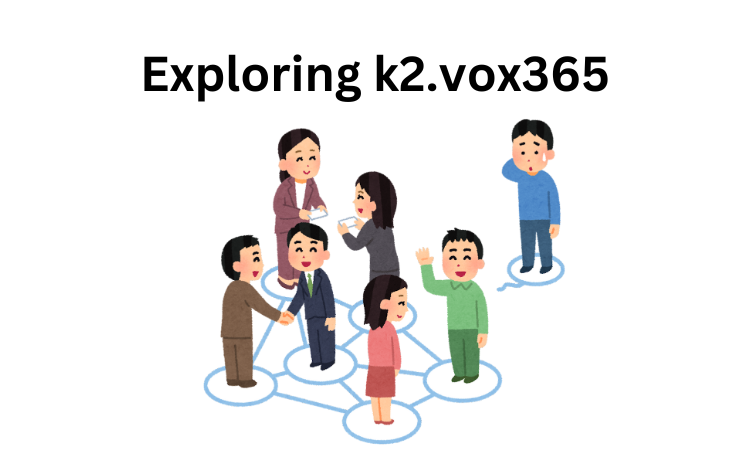
In today’s fast-paced digital world, businesses and individuals alike are constantly looking for efficient ways to communicate and collaborate. Enter k2.vox365, a powerful platform designed to streamline communication, enhance collaboration, and boost productivity. With its comprehensive suite of tools, k2.vox365 is rapidly becoming a preferred solution for businesses, educational institutions, and remote teams looking to stay connected and organized.
What is k2.vox365?
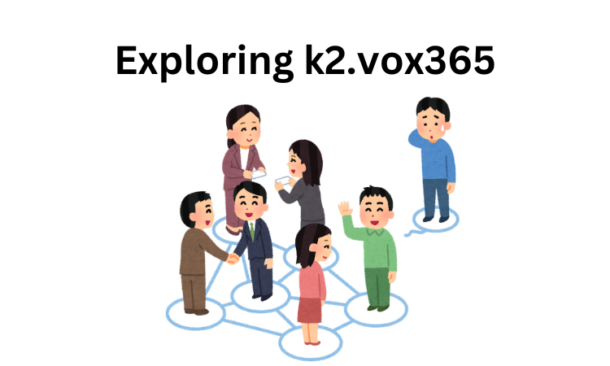
At its core, k2.vox365 is a unified communication and collaboration platform that brings together messaging, video calls, and project management into one seamless experience. Unlike traditional tools that require switching between different apps for emails, chat, and file sharing, k2.vox365 integrates all these features into a single, easy-to-use platform. This all-in-one solution reduces complexity and makes communication more efficient for teams of all sizes. Since its inception, k2.vox365 has gained traction for its robust functionality and user-friendly interface, positioning it as a strong competitor in the digital communication space.
Core Features of k2.vox365
A. Unified Messaging
One of the standout features of k2.vox365 is its unified messaging capability. The platform allows users to manage all forms of communication — whether it’s emails, instant messages, or video calls — from one place. Users can easily transition between messaging modes without the hassle of switching between apps. This is especially beneficial for teams who need real-time communication but also rely on email for formal exchanges.
B. Collaboration Tools
In addition to communication, k2.vox365 offers a suite of collaboration tools that help teams work together effectively. Whether it’s real-time document editing, file sharing, or managing tasks and projects, k2.vox365 enables seamless collaboration across departments. Teams can work on the same document simultaneously, leaving comments, making changes, and tracking progress all in one place, reducing the need for endless email chains or disjointed software solutions.
C. Cloud-based Accessibility
With cloud-based accessibility, k2.vox365 ensures that users can access their work from any device, at any time. Files, messages, and projects are all stored securely in the cloud, allowing for easy access whether you’re in the office or working remotely. This also means that data is continuously backed up, minimizing the risk of losing important information due to technical failures.
How k2.vox365 Enhances Business Productivity
One of the biggest benefits of k2.vox365 is its ability to boost business productivity. By consolidating communication, collaboration, and project management into one platform, teams can work more efficiently. The unified approach reduces downtime spent switching between apps, looking for files, or chasing down project updates. This streamlined workflow allows employees to focus on what truly matters: delivering results. Furthermore, the real-time collaboration tools improve team coordination, ensuring everyone stays on the same page.
Security and Data Protection in k2.vox365
In an age where data breaches and cyber threats are rampant, k2.vox365 prioritizes security and data protection. The platform uses end-to-end encryption to ensure that all communication, whether it’s messaging, video calls, or file sharing, remains secure. Additionally, k2.vox365 complies with important data privacy regulations, such as GDPR, offering peace of mind to businesses concerned about safeguarding sensitive information. The platform also includes advanced measures to protect against phishing attacks and malware, ensuring a secure communication environment for all users.
Industry Applications of k2.vox365
k2.vox365 is not just for businesses. Its versatility makes it an excellent choice for a variety of industries:
A. Corporate Environments
In corporate settings, k2.vox365 is used to streamline internal communication and project management. Its integrated tools allow departments to work more efficiently, keeping track of tasks, deadlines, and project progress. The platform’s unified messaging system also makes it easy for team members to stay in constant communication, regardless of their location.
B. Educational Institutions
For educational institutions, k2.vox365 provides a seamless way to support virtual learning. Teachers and students can communicate through video calls, share files, and collaborate on assignments in real time. The platform’s task management tools help students stay organized, ensuring that assignments are completed on time.
C. Remote Work
With remote work becoming the norm, k2.vox365 plays a crucial role in enabling teams to stay connected no matter where they are. Its cloud-based services ensure that employees can access files and communicate with colleagues from any device, making it a perfect tool for global teams and freelancers who need to collaborate across time zones.
Comparing k2.vox365 with Competitors
When compared to other popular platforms like Microsoft Teams, Slack, or Zoom, k2.vox365 holds its own. While Microsoft Teams and Slack are well-known for their chat-based collaboration, k2.vox365 excels with its broader set of features, including unified messaging, integrated project management, and cloud accessibility. Zoom, a leader in video conferencing, offers a more limited scope compared to k2.vox365’s full suite of tools. The strength of k2.vox365 lies in its ability to combine multiple communication channels into one platform, giving it an edge over these single-function competitors.
User Testimonials and Case Studies
Many businesses have seen tangible benefits after adopting k2.vox365. For instance, XYZ Corporation, a mid-sized tech company, reported a 20% increase in team productivity after switching to the platform. The real-time collaboration tools helped employees reduce delays and stay better aligned on projects. Similarly, ABC University found that k2.vox365 significantly improved communication between students and faculty, especially during the shift to remote learning.
Pricing and Subscription Plans
k2.vox365 offers flexible pricing tailored to different business needs. For small businesses, there’s a basic plan that includes essential features like messaging and file sharing. Larger enterprises can opt for more advanced plans, which offer additional features like enhanced security, advanced project management tools, and increased cloud storage. There are also customized plans for educational institutions, allowing them to access the platform’s full suite at a discounted rate.
Future Prospects for k2.vox365
The future looks bright for k2.vox365. The platform’s developers are continuously working on new features, including AI-driven productivity tools and more advanced security protocols. As businesses continue to shift towards digital solutions, k2.vox365 is poised to become a leader in the communication and collaboration space. With plans to expand its global presence, the platform is set to make a significant impact in the market in the coming years.
Conclusion
In conclusion, k2.vox365 is an innovative platform that provides a comprehensive solution for communication and collaboration. With its unified messaging system, real-time collaboration tools, and cloud-based accessibility, it is designed to help businesses, educational institutions, and remote teams stay connected and productive. As digital communication continues to evolve, k2.vox365 is well-positioned to lead the way, offering the tools and features necessary for success in today’s fast-paced world.
Casual
Creative Ideas for Best Technology Instagram Post 2024

Are you facing difficulty in engaging your audience with tech posts on Instagram? As social media platforms have transformed into virtual marketplaces, brands recognize the need to showcase expertise through engaging content.
Platforms like Instagram empower connecting with worldwide audiences through captivating visual stories. But, it is quite a daunting task to work and many move ahead to buy Instagram followers as well.
Contemporary consumers scarcely have time for promotion lacking substance. Hence, creatives demand integrating education with entertainment for intrinsically motivating connections. This is why in this post, we discuss top ideas for your tech-posts on Instagram. Read on.
Top Instagram Post Ideas for Technology in 2024
There are many creative and unique ways to catch attention for your technology posts on Instagram. Below we discuss some of the most popular ones that can certainly get all eyes on you.
I. Using Tech Products as Props
Showcasing the ergonomic elegance of newest smartphones through lifestyle photos depicting them harmonizing with modern interiors signifies how technologies enhance lives unobtrusively.
Flat lays carefully arranging phones alongside complementary gadgets like smartwatches and earbuds exhibits compatible accessories apt for varied tasks. Close-up shots exploring interesting details on laptops or cameras from unique angles pique curiosity towards innovative engineering.
Illustrations envisioning people multitasking efficiently through integration of different devices tells stories audiences relate to. Including props within realistic settings displays practical applications beyond technical specifications.
II. Behind the Scenes Photos of Tech
Sneak peeks hinting at cutting-edge features of anticipated device launches grant exclusivity while cultivating hype. Well-lit workplace photographs portray engineers concentrating on prototyping components and inspire admiration.
Snapshots capturing programming teams collaborating wirelessly on interactive whiteboards through mobile apps demonstrate streamlined productivity. Infographics adorning clean designs simplify explaining complex algorithms behind facial recognition or data analytics in accessible language.
Short videos taking viewers inside futuristic factories reveal meticulous manufacturing processes with a sense of intimacy.
III. Infusing Tech with Humor
Lighthearted memes humorously portraying predictable reactions to everyday tech troubles provide comic relief to stressful scenarios. Relatable situations humorously presented divert from serious sales pitches.
Personified tech objects in comical misadventures amuse audiences through humanizing technology. Satires skewering society’s obsession with smartphones in a tongue-in-cheek manner encourages shares to spread smiles. When infused judiciously, humor aids connection by sparking emotions beyond sales.
IV. Showcasing the Human Side of Tech
Introducing changemakers through portraits celebrating their groundbreaking work nurtures admiration. Profiles highlighting individuals transforming lives through accessible education technologies promote empowerment.
Environmental initiatives leveraging automation to offset carbon footprints brings a humanistic face to sustainability efforts. Impactful community projects excelling through connectivity showcase technology uplifting society versus solely profit motives.
Sensitively showcasing stories of overcoming challenges strengthens bonds between brands and audiences.
V. Visual Presentations of Tech Topics
Creative arrangements of flat lays showcasing virtual or mixed reality controllers provides an experiential feel of the immersive tech itself. Sequential photos arranged like puzzle pieces or in grids present complex technical concepts through visual storytelling.
Infographics leveraging minimalist aesthetics simplify explaining blockchain or cloud computing. Illustrations personifying IoT appliances in a “day in life” routine brings relatability to innovations perceived as complex. Data visualizations comparing tech trends succinctly impart industry insights.
VI. Leveraging Trending Tech Themes
Imaginative demonstrations of artificial intelligence streamlining lives pique intrigue towards groundbreaking research. Showcasing developments in robotics, VR or internet of things solving pressing issues cultivates social purpose beyond sales.
Highlighting startups leveraging cutting-edge innovations attracts investors and talent. Curated reels condensing key takeaways from tech summits grant exclusive access. Tactical hashtags around concepts ranging from 5G to cybersecurity optimize discovery of relevant audiences worldwide.
Unique Ways To Boost Engagement
With competition so fierce, it becomes difficult to keep your audience engaged with your post. Below we discuss some essential tips that can make things easy for you. Take a look:
● Researching Optimized Hashtags
Analyzing hashtag clusters witnessing frequent usages around niche conversations aids discovering appropriate tags aligning with targeted audiences. Careful hashtagging aids discoverability and spreads messages to receptive crowds naturally.
● Optimizing Images For Social Formats
Adjusting photos to square dimensions suitable for Instagram feeds and story formats preserves visual quality and context. Proper sizing and cropping focuses viewer attention on essential elements.
● Scheduling Around Peak Engagement Timings
Identifying timing patterns of highest follower activities through analytics aids posting when most eyeballs will likely notice new updates. Repurposing top performing content as story highlights retains visibility.
● Reviewing Engagement And Follower Insights
Regularly evaluating metrics like likes, comments, saves and follower growth rates aids comprehending reception and refining strategies. Tracking identified hashtag or location based communities’ interests guides customized content.
● Partnering With Key Influencers
Reaching wider audiences through cross-promotional shoutouts with popular domain figures expands networks. Collaborations establishing brand authority through third party endorsements bolster credibility.
Final Thoughts
In summary, effectively leveraging visual creativity fueled by data-driven decisions establishes technology companies, alongside support from a dedicated social media growth agency like Thunderclap.it, as thought leaders amid competition on platforms like Instagram.
Consistency, authenticity, and nurturing communities through meaningful interactions are crucial for driving organic visibility and achieving superior returns on social media. While maintaining technical excellence is essential, emotionally connecting with audiences through social missions and humor helps build a loyal following and fosters trust in this experience-driven world.
-

 Guides5 years ago
Guides5 years ago6 Proven Ways to Get more Instagram Likes on your Business Account
-
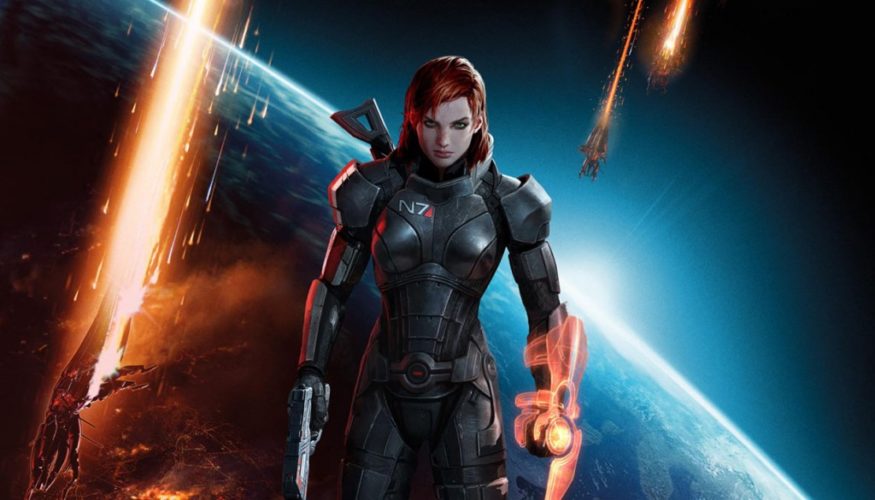
 Mainstream10 years ago
Mainstream10 years agoBioWare: Mass Effect 4 to Benefit From Dropping Last-Gen, Will Not Share Template With Dragon Age: Inquisition
-
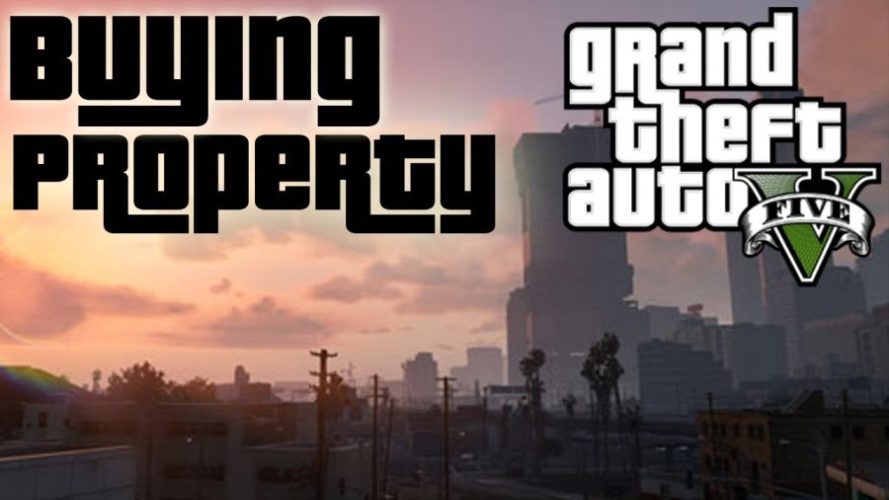
 Mainstream6 years ago
Mainstream6 years agoHow to Buy Property & Safe Houses in GTA 5 (Grand Theft Auto 5)
-

 Casual1 year ago
Casual1 year ago8 Ways to Fix Over-Extrusion and Under-Extrusion in 3D Printing
-
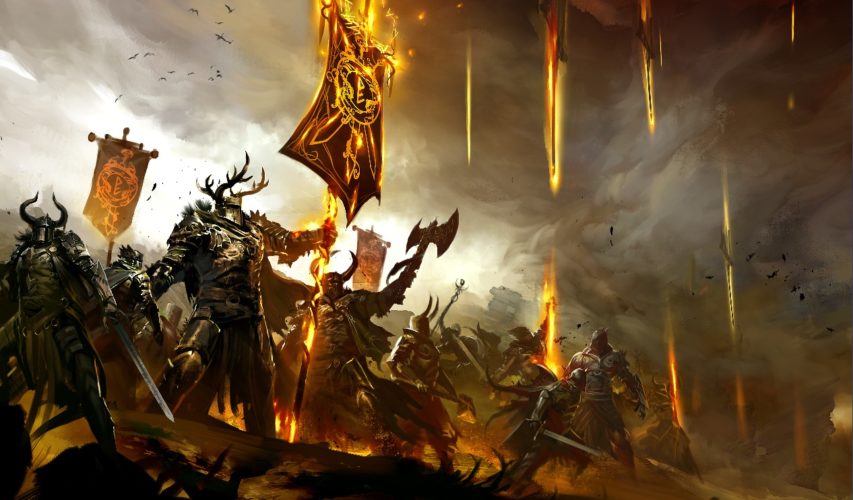
 Mainstream12 years ago
Mainstream12 years agoGuild Wars 2: The eSports Dream and the sPvP Tragedy
-

 Uncategorized4 years ago
Uncategorized4 years agoTips To Compose a Technical Essay
-
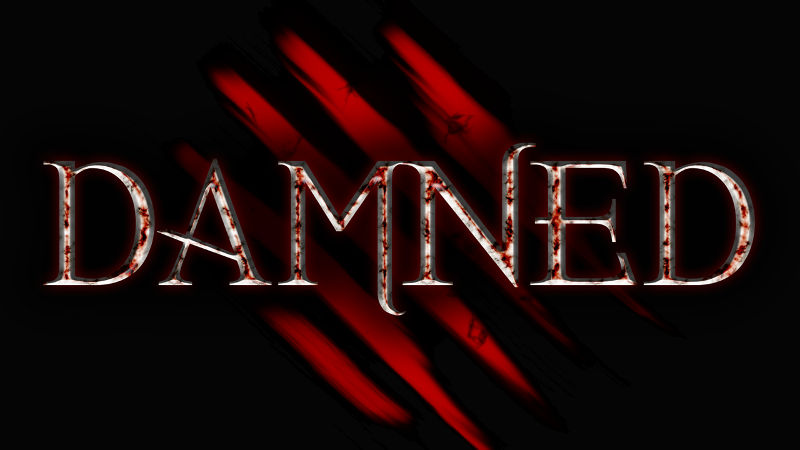
 Indie12 years ago
Indie12 years agoCo-op Horror: An Interview With The Developers of Damned
-
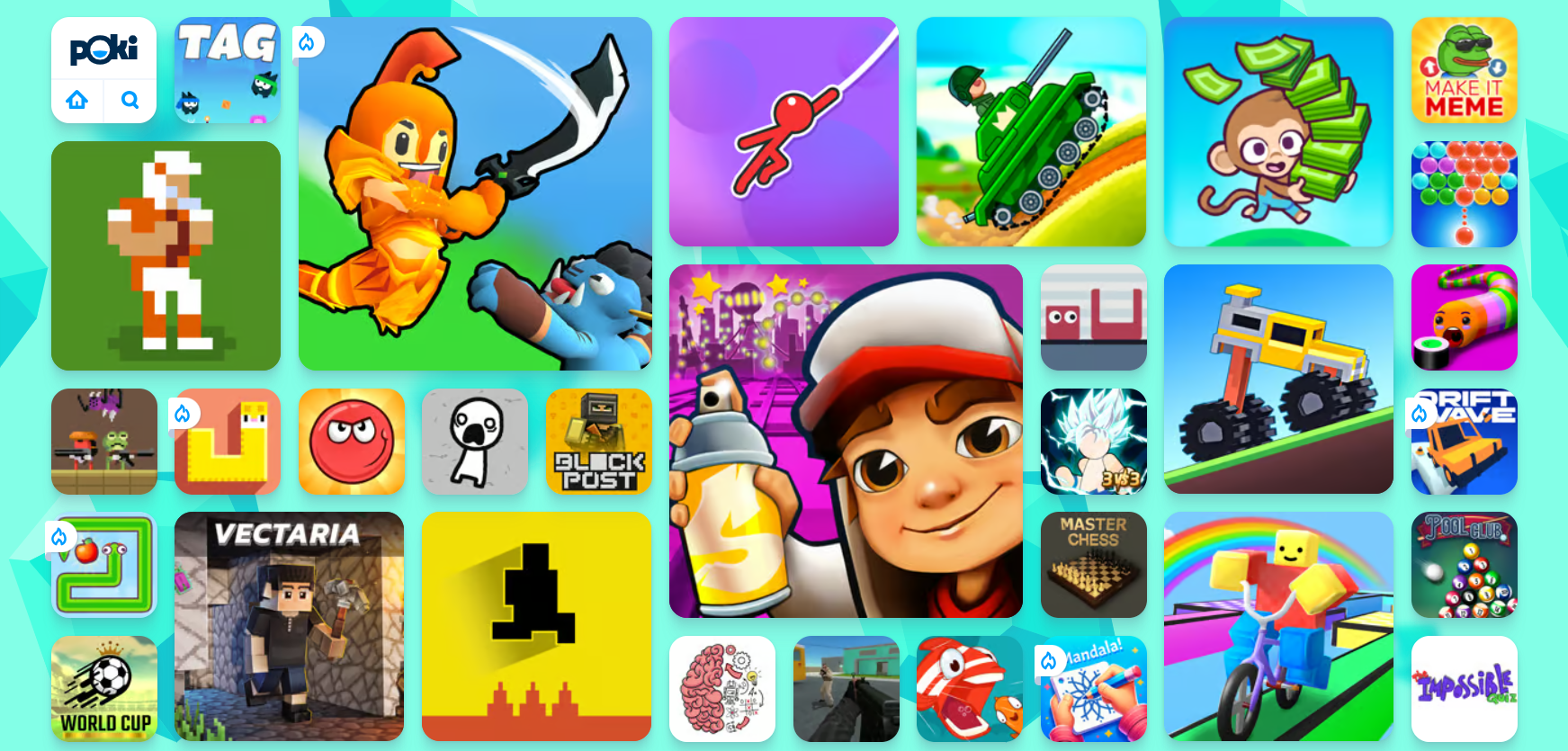
 Guides1 year ago
Guides1 year agoExplore 15 Most Popular Poki Games

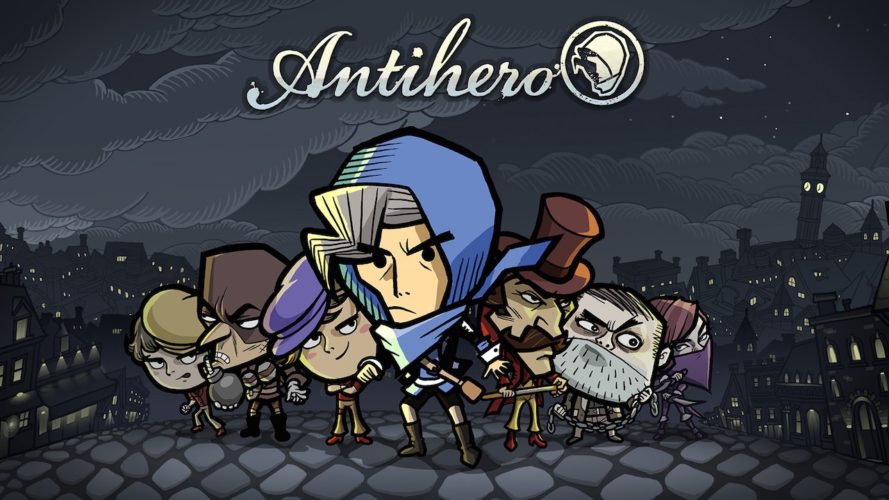
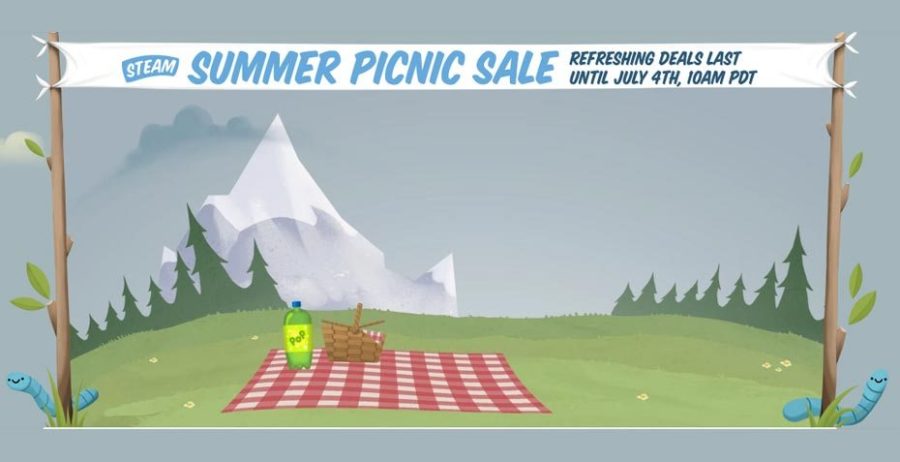
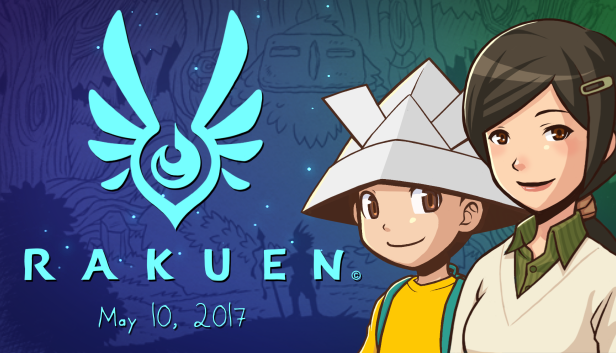

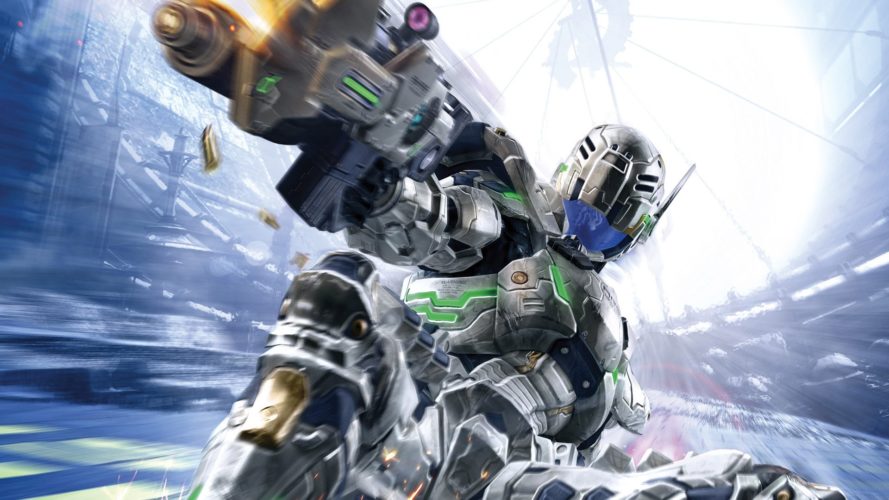
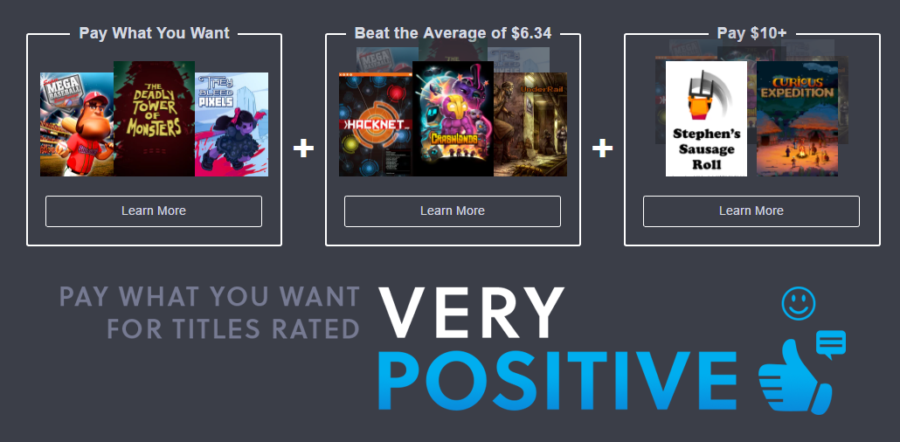
pox
February 17, 2014 at 1:29 am
Truly incredible game.
raspiz
February 17, 2014 at 7:44 am
Thanks to both of you for doing this interview. Gnomoria is the best gem of a game I have found in the last year and it’s nice to hear from the man that crafted it. I always look forward to digging back in and trying all the new features when I get a chance. I’m glad RoboB0b is able to make a living doing what he loves, working for himself, and pleasing so many people. Keep up the great work.